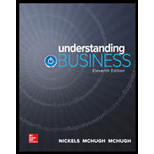
Case summary: Person J of A Company, which provides call centre and receptionist services for other business, had expanded from one-man company to a strength of 650 employees. Earlier A Company suffered from high-turnover rate that is usual in the cell centre industry. Thus, the Person J chose to reorganize the business to concentrate on employee satisfaction and wellness. Person J developed new set of company principles that motivated employees to think like customers and take care of each other. Person J introduced flexible schedules to and training programs Generation Y. Person J has even introduced an app to know the suggestions of the employees. Person J started a Dream On Program to help make selected employees “dreams” come true. Thus, because of the reinforcement, by A Company, employees were motivated and happy to be productive and thus are willing to stay at their jobs.
Characters in the case: The characters that in the case are A Company, and Person J.
Adequate information: A Company has restructured its business to focus more on employee satisfaction and wellness.
To discuss: Ways in which Person J increased employee motivation by understanding and adapting the motivational theories and the most appropriate theory.
Want to see the full answer?
Check out a sample textbook solution
Chapter 10 Solutions
Understanding Business
- Hi! Can you guys help me with this? Thank you! Here's the article by Lingling Wei from Wall Street Journal called U.S. News --- THE OUTLOOK: Chine Weighs Export Cut to Blunt Tariffs Please offer authentic insights on how this article connects with global supply chain management.arrow_forwardCan you guys help me on this? Thank you! Here's the authentic insight my classmate wrote about the article they chose here. Please give a little comment on this insight that my classmate just wrote. Thank you!arrow_forwardIdentify potential ethical challenges in producing and marketing your company's skincareproducts in europe and associated countries like germany italy and france and how your team will address them.arrow_forward
- Discuss knowledge and skills international managers need to navigate the expansion of skincare line in international markets such europe including countries like germany italy and francearrow_forwardResearch Methods for Business Research Topic : Improving Customer Retention in the Hotel Industry Through Personalized Marketing Strategies. 1. Based on the research topic please provide an introduction for a research report. Please use the screenshot for guidance on how to do the introduction. please add citations and references.arrow_forwardDiscuss knowledge and skills international managers need to navigate the expansion ofskincare line in international markets such as europe including countries like germany italy and francearrow_forward
- You have reviewed probability rules and the types of probability distributions in this chapter. For this discussion board assignment: Describe ways you are applying (or can apply) probability distributions in your workplace. Choose a discrete probability distribution and a continuous probability distribution, and describe how they can assist you in your profession. If you are not currently working, describe how they can assist in your targeted profession. How can the tools learned in this chapter help you make better decisions at work?arrow_forward| do not copy from another same ques answer,i need differe nt one. Task Description: One of the most important questions faced by business leaders in the strategic marketing process is a choice of timing to launch new product/technologies and enter new markets. There are two options: to be a pioneer or to be a follower. Both have advantages and risks, the relative success of each strategy depends on several factors, both internal and external. Tasks: Answer the following essay questions: 1. What are the advantages of being a pioneer and follower company? Provide examples of successful pioneer and follower companies. 2. What product life cycle strategies do successful pioneer and follower companies implement to increase growth and maintain a strong competitive advantage? Provide examples of companies to support statements made. Follow instruction: 1. Word: within 2500 word, not bellow 2400. 2. Give table, charts, diagrams, graphs and images should be properly cited and properly named.arrow_forwardHow can viewing a new restaurant organization at the three levels of quality, including the "strategic level" (Senior leadership), "tactical level" (middle management), and "operational level" (Frontline emoyees), enhance the business plan?arrow_forward
- This week we looked at descriptive statistics and the role they play in helping us understand the data we have. For this discussion board assignment, imagine that you are helping your friend in buying a home in the greater St. Louis region. How would you use the methods learned in this chapter to inform you and your friend? Choose any 2 measures of location, 2 measures of dispersion and 2 measures of association and explain how you would use them to aid your home hunting process.arrow_forwardWhat is the purpose of primary and secondary data in researcharrow_forwardHow does the research fulfill the requirement and integrate a Christian worldview? What are the research concepts of Potential Research Locations and biblical perspective? What is the Potential Research Location and where the qualitative single case study could be conducted?arrow_forward
 Understanding Management (MindTap Course List)ManagementISBN:9781305502215Author:Richard L. Daft, Dorothy MarcicPublisher:Cengage Learning
Understanding Management (MindTap Course List)ManagementISBN:9781305502215Author:Richard L. Daft, Dorothy MarcicPublisher:Cengage Learning Management, Loose-Leaf VersionManagementISBN:9781305969308Author:Richard L. DaftPublisher:South-Western College Pub
Management, Loose-Leaf VersionManagementISBN:9781305969308Author:Richard L. DaftPublisher:South-Western College Pub Foundations of Business (MindTap Course List)MarketingISBN:9781337386920Author:William M. Pride, Robert J. Hughes, Jack R. KapoorPublisher:Cengage Learning
Foundations of Business (MindTap Course List)MarketingISBN:9781337386920Author:William M. Pride, Robert J. Hughes, Jack R. KapoorPublisher:Cengage Learning Foundations of Business - Standalone book (MindTa...MarketingISBN:9781285193946Author:William M. Pride, Robert J. Hughes, Jack R. KapoorPublisher:Cengage Learning
Foundations of Business - Standalone book (MindTa...MarketingISBN:9781285193946Author:William M. Pride, Robert J. Hughes, Jack R. KapoorPublisher:Cengage Learning




